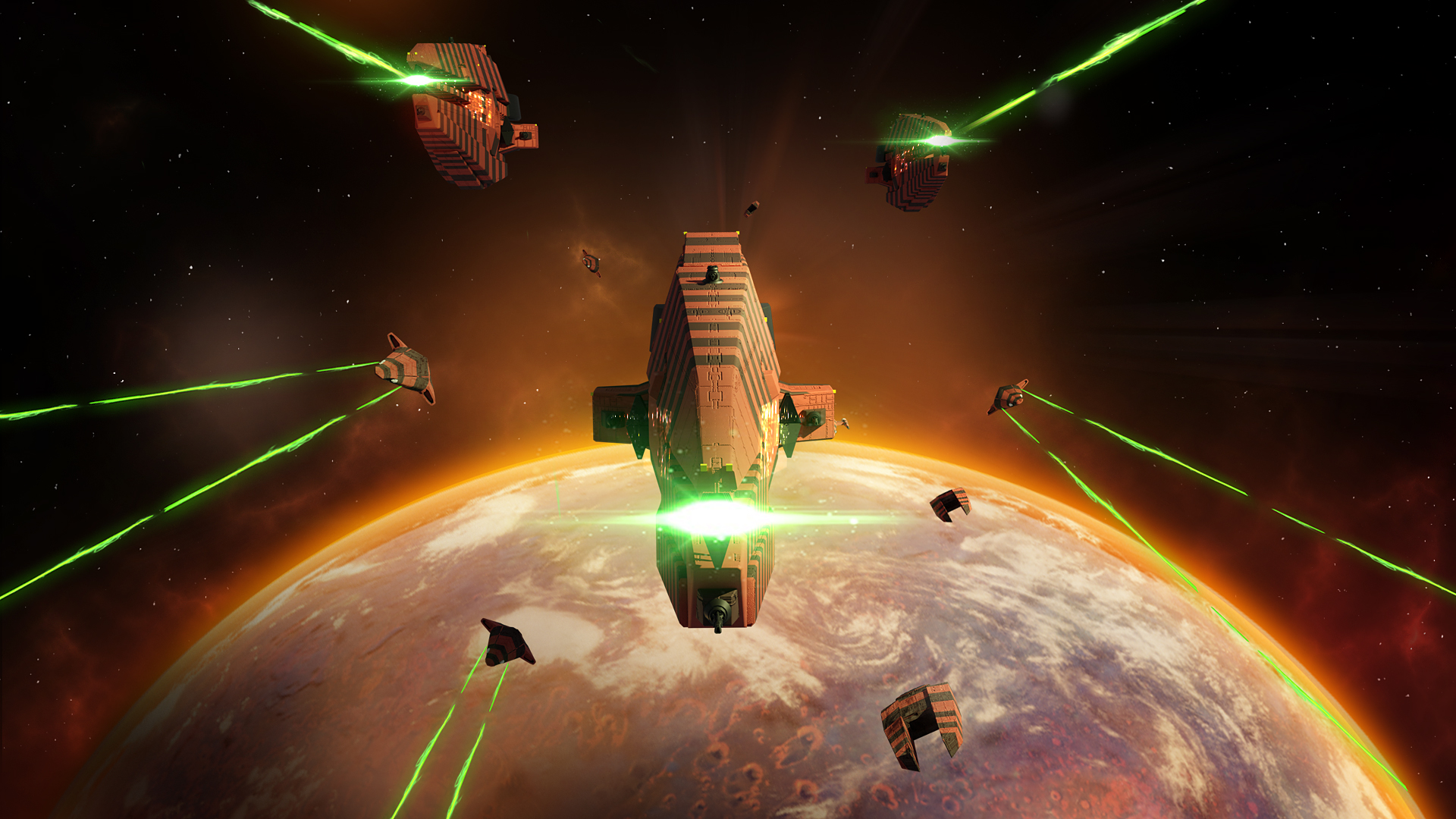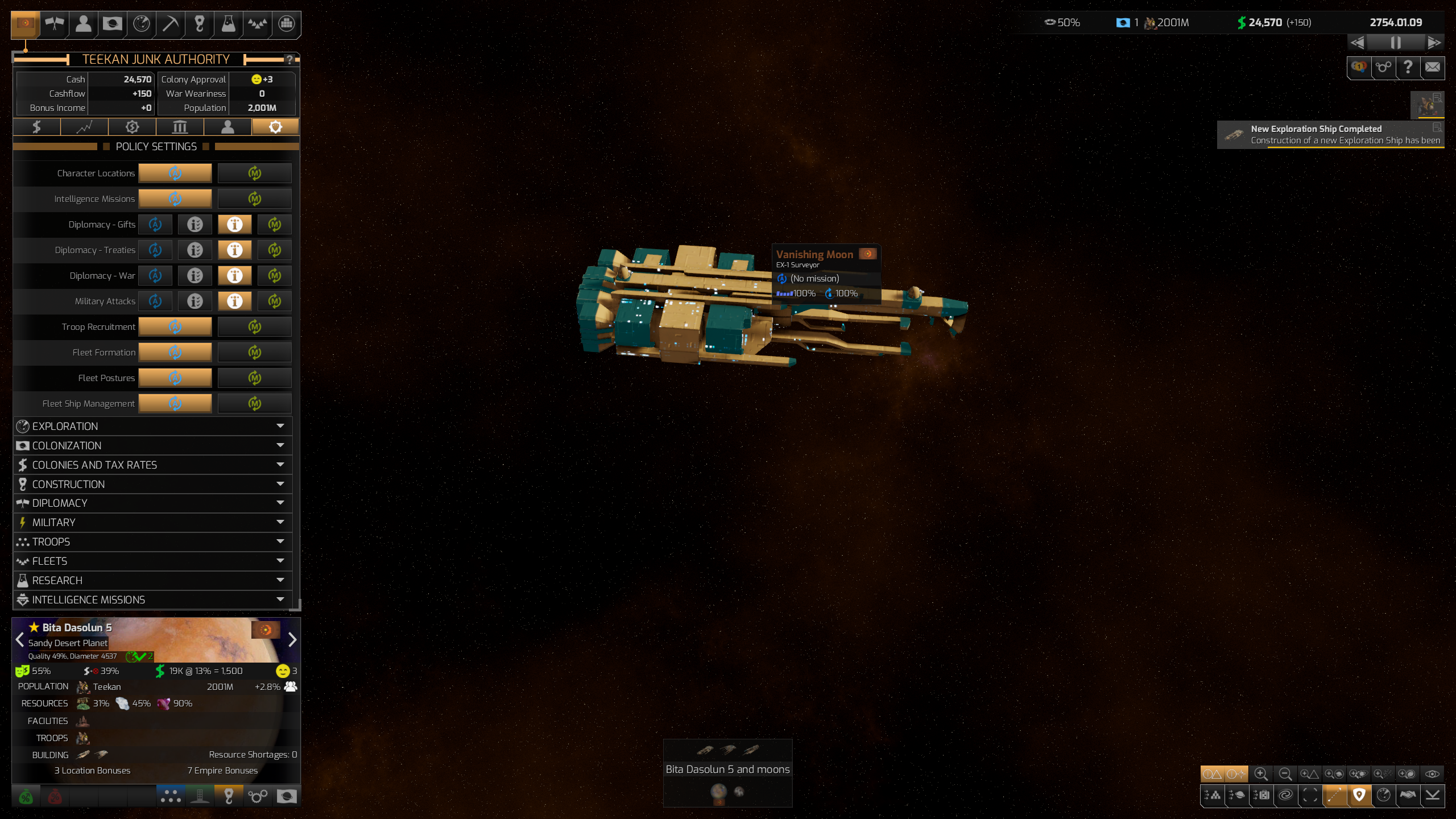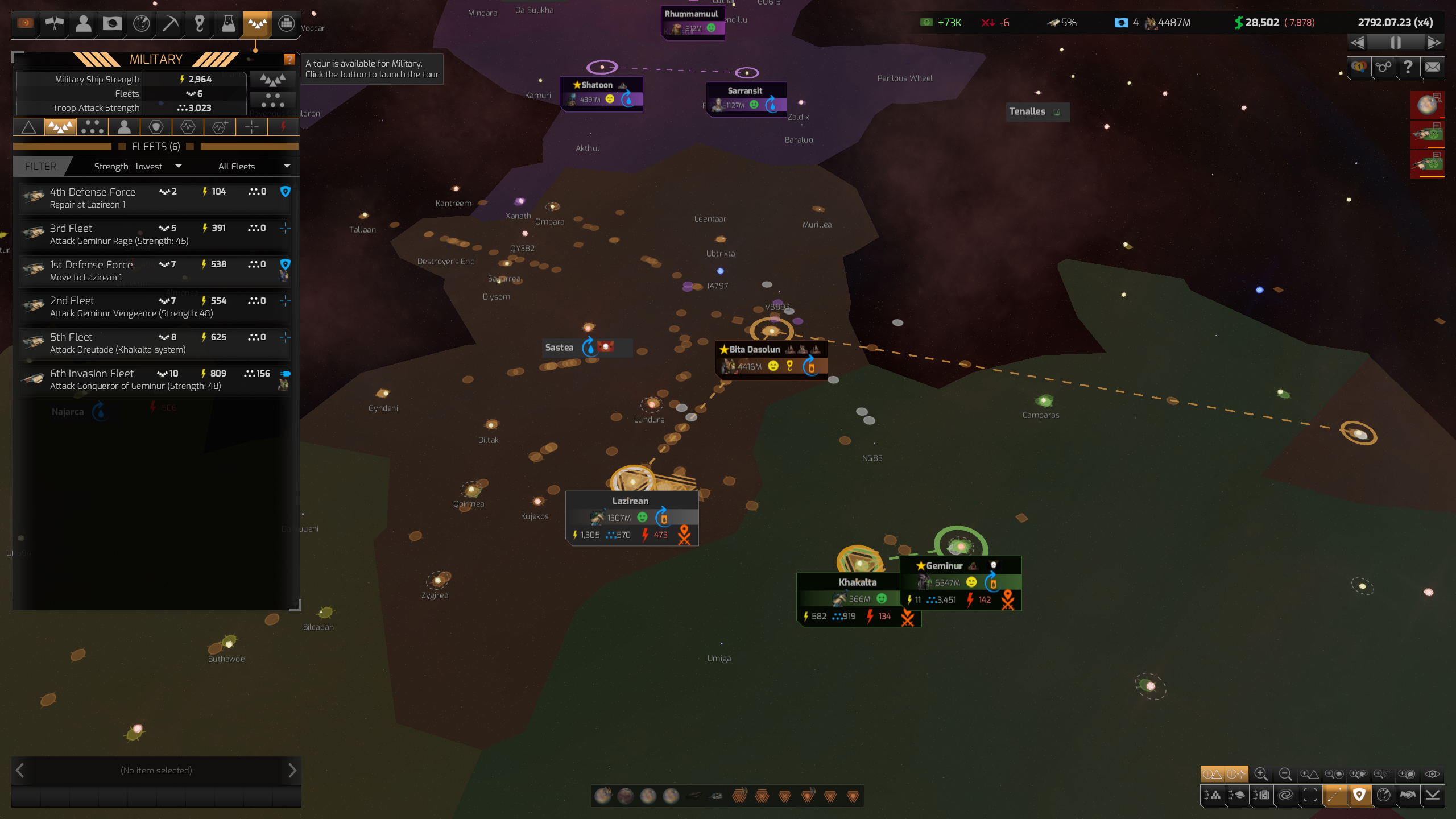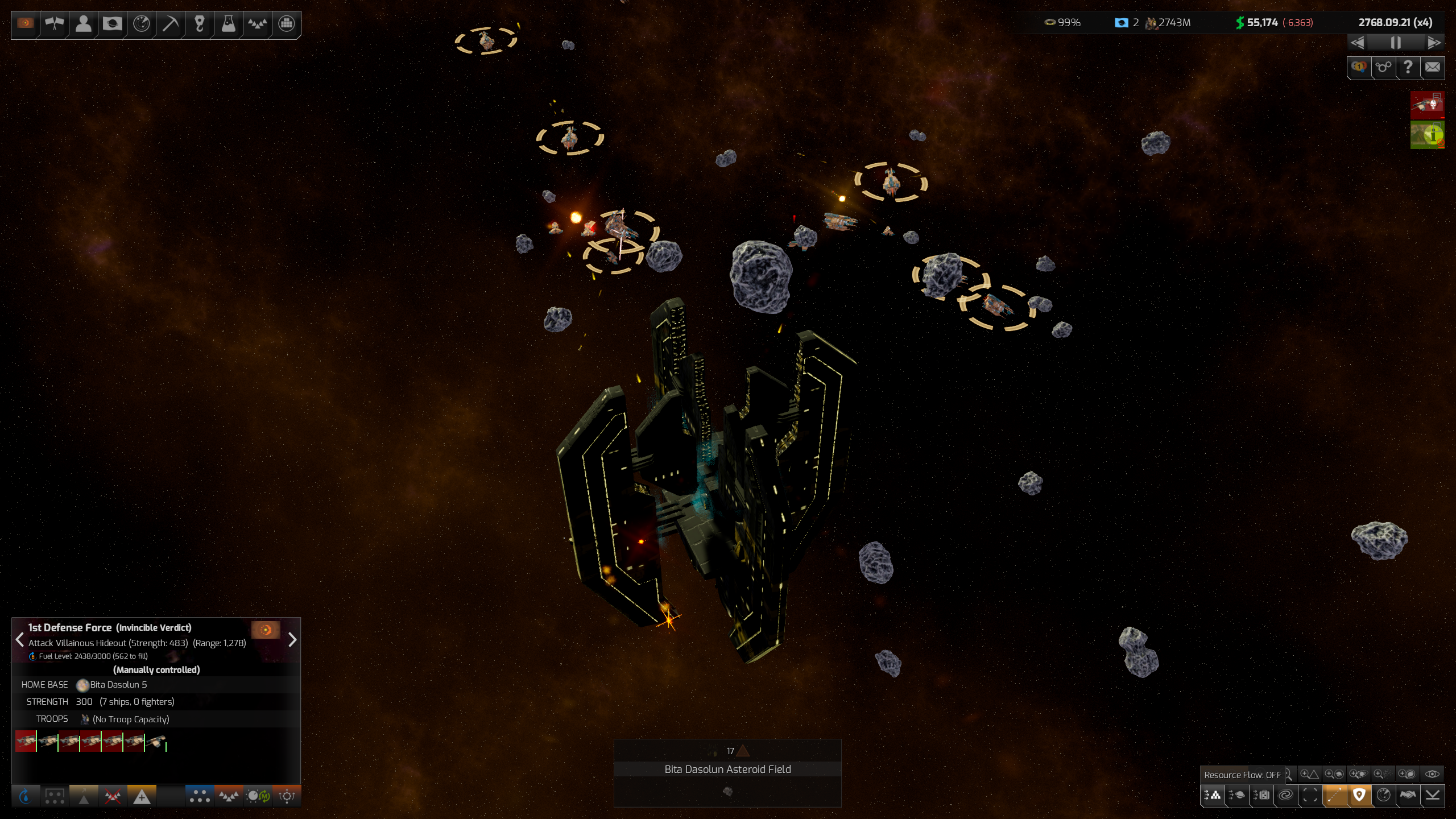Distant Worlds 2 is an infinitely complex space 4X you can play in your sleep
But you'll have more fun if you're awake.

Even among the 4X-obsessed, the Distant Worlds series can be a lot. Like its predecessor, Distant Worlds 2—which launched on Steam last week—is an elaborate space opera as interested in minutiae as it is with the big picture. It's a game where you don't just need to worry about your state economy, but the private civilian one as well, and where every hunk of ore is a tangible thing that needs to be ferried across the galaxy to feed your need for more ships.
With only a tiny pre-warp empire to manage initially, you'll still be bombarded with a cavalcade of important decisions and Byzantine menus right out the gate—they're more accessible than they look, to be fair—which can be exhausting even for veteran Galactic Emperors. Thank god, then, for delegation.

See, Distant Worlds 2's need to simulate so much of its random war-torn galaxies and the empires colliding within them means we also get the tools to make the task of corralling all this chaos so much easier. Everything can be automated, from research to ship construction. Even wars can start and end without your input, if you want. This is great if you just want to play a slightly disinterested cosmic deity, watching everything unfold below you, but the most natural way to play is by giving yourself a few important responsibilities, and then slowly taking over other systems as you learn the ins and outs of this complex 4X.
This is still management. Indeed, it captures the experience of being in charge far more than games that give you complete control over everything. Online editor is small potatoes compared to the ruler of a space empire, but even I need to delegate sometimes. What and how you delegate is also extremely important. You're not just handing stuff over to the AI—you're setting parameters and behaviours, influencing everything even if you've not taken direct control.
Even how specific ships in your fleets act can be determined by you and then automated. So you can tell your fleet how to behave, fully automate them, and then go into the fleet and assign individual vessels different orders. If you've got an attack or invasion fleet that includes some vulnerable troop transports, you can make sure they retreat earlier and stay out of the way of the enemy, even while the rest of the fleet charges into the fray without a second thought.

Automation is baked into Distant Worlds 2. It's not just a bunch of buttons and sliders—some features are inherently automated no matter what you choose. Your civilian economy, for instance, is largely out of your hands, unless your government has an authoritarian streak. Mining vessels travel to asteroids and stations, harvesting resources that will then be taken all over the galaxy by freighters. They make cash, commission ships, and fill up the trade lanes with little vessels going to and fro, making the galaxy a much livelier place.
Even though the civilian economy is outside your direct control, it can't exist without you. The mining stations that let them harvest resources, the space ports where they build their ships and the escorts that protect them from pirates and enemy empires all need to be constructed by you (or the AI, if you've delegated), spending cash from the state economy. All these things are required for a flourishing private economy, which in turn will provide you with the resources you need to continue expanding your empire.
The biggest gaming news, reviews and hardware deals
Keep up to date with the most important stories and the best deals, as picked by the PC Gamer team.
Someone else's problem
I went with the default settings for my first empire, which gives you control over a pre-warp civilisation with a single world and a couple of ships, along with a mix of full automation, advisor suggestions and direct control. I quickly took over research, because the AI had some really weird ideas about what I needed, but otherwise left everything the same for the first few hours.

The AI is generally good at looking after things, but sometimes it can be a bit eccentric. The teekans, the founding species of my first empire, are rodent-like critters who love junk—think jawas without the dapper robes—and I gave myself two primary objectives: steal a lot of tech and make a lot of cash. It seemed fitting. But my diplomats consistently tried to give away the bulk of my wealth to a bunch of lizards who thought we were dicks. This is because Distant Worlds 2 lamentably continues the 4X tradition of throwing money at people to make them like you. It's a dumb system, and especially ludicrous when you don't even have enough cash for a single colony ship but are still being asked to give away three-quarters of your wealth.
While this could have been devastating for me, luckily my diplomats didn't have complete autonomy. They had to ask me for permission first. Which I obviously didn't give. But the requests kept coming anyway. Eventually I just took over diplomacy myself.
So there are some niggles, but that's why you can create these checks, to make sure the AI isn't getting you into trouble. For the most part, though, I'm happy to give control over to the AI, especially for the stuff I don't enjoy, like ship design. I used to waste a lot of energy defending ship design systems, but now they're so ubiquitous and dull that I'm sick of sticking up for them. I've come to accept that they almost always require way too much faffing around, and it never ends. Every time you unlock a new component, it's time to make some new blueprints. Awful stuff. Letting the AI take over this bullshit busywork makes me a very happy boy.

Last night, I ate a delicious kebab while simply watching my empire do its thing. I was going to watch some more Boba Fett on Disney+, but Distant Worlds 2 proved the more compelling option. And it was a delight. I spent a while simply staring at civilian vessels going to work, and then enjoyed some action when one of my attack fleets took out a pirate base. And I didn't just feel like a spectator. My fingerprints were everywhere. I built the attack fleet myself. I got into a war with pirates because I refused to pay protection. I made the space port that constructed all these civilian ships. It didn't cease to be my empire just because I was covered in garlic sauce.
Speaking of pirates, they suck! The moment you encounter a pirate faction, regardless of where it is, it will demand protection money. If you don't pay up, they'll harass you and raid your stations and worlds incessantly, until you destroy them or cut a deal. And there are a lot of pirates in the default setting. It means you're either constantly dealing with raids or completely broke. And these pirates don't understand how a protection racket works, because they seem perfectly content to let other pirates exploit or attack you. Surely it's bad for business, but they don't seem to give a shit. Eventually you'll be strong enough to take them out, but it makes for an exhausting early game.
Thankfully, you can get rid of them entirely when you start a new game, or just reduce their number, strength and proximity. Even for a genre that typically lets you fine-tune your starting situation, Distant Worlds 2 offers a great deal of options. And like all the automation, the game settings really allow you to create the 4X you want to play, even if it's one that lets you ignore piracy and bury your face in a kebab.

Fraser is the UK online editor and has actually met The Internet in person. With over a decade of experience, he's been around the block a few times, serving as a freelancer, news editor and prolific reviewer. Strategy games have been a 30-year-long obsession, from tiny RTSs to sprawling political sims, and he never turns down the chance to rave about Total War or Crusader Kings. He's also been known to set up shop in the latest MMO and likes to wind down with an endlessly deep, systemic RPG. These days, when he's not editing, he can usually be found writing features that are 1,000 words too long or talking about his dog.

